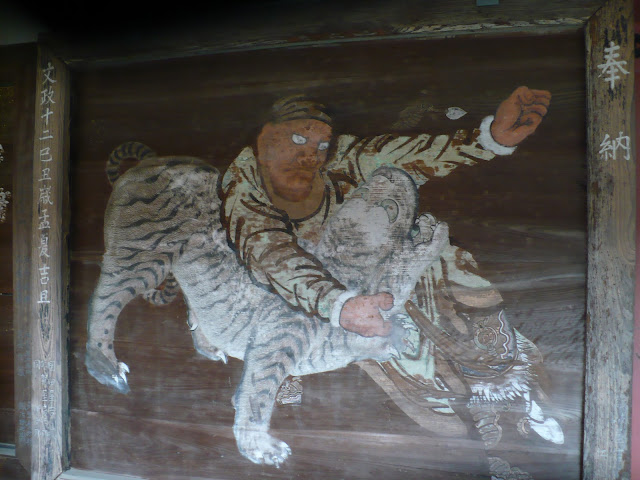
One of the pleasures of living in Japan is that I'm able to get the latest Murakami well before it ever makes it to the states. His newest collection of essays, a self described "comeback after a ten year absence" (as an essayist) is titled
The Enormous Turnip, The Difficult Avocado.
Like salivating over "Japan's most delicious oolong tea (© Murakami)" I was drawn to the cover before I even saw that it was a Murakami by — what else — the big, fat turnip with its conga line of characters dangling from it, the lot of them just having pulled it from the earth.
The cover illustration reminded me of a post I did back in
March about a magazine I had found which exalted the turnip by dedicating its entire 96 pages to that venerable vegetable.
And inside that magazine, on page 64, was a spread on the well-known Russian children's book by Alexei Tolstoy from which Murakami got half his title. In the story, an old man grows a giant turnip, asking his wife to help him pull it out after he is unable to do it alone. When even the two of them can't manage it, they recruit, one by one, a child, a dog, a cat, and on down the line to a mouse, until the thing at last pulls free.
The Enormous Turnip's enduring popularity as a children's
book does say something interesting about the desire for a kind of
collectivism in Japan (I'm assuming that parents pick out most of what
children read at this age); or, if not collectivism
per se, at
least an emphasis on the importance of working together to achieve a
common aim. Certainly we're not talking about the fostering of a kind of
Russian brand of early Bolshevism; more to the point, I think, is the
continued honeycombing of the collective brain-hive, a snug, neatly
built structure protected by virtue of being surrounded by ocean; by
virtue of employing a single language; by adherence to the notion that
the harmony of the group
matters.
While
The Enormous Turnip may be an apt metaphor for the all-for-one mentality that will be needed to cope with the ongoing problems associated with the worst nuclear accident since Chernobyl (you can read about some of the latest issues
here,
here, and
here) it may be a tad simplistic to think that there's going to be some sort of early 1960's-like inspired flowering of national will to achieve those ends. Given the technical difficulties of handling the clean-up of radioactive elements; and normal people's normal aversion to getting anywhere near anything called "radioactive," there's just as likely to be a national burying of heads in sand, a national distancing, as time piles on top of itself, and forests grow, and power plants resume humming, and people forget.
But since I don't think Murakami's essay has so much to do with some of these specific larger issues, and since this post was supposed to be about serendipity, and influences, and what is "in the air" at any one moment, I'll end this admittedly ragged post with one of the book's illustrations, by Ayuru Ōhashi (大橋歩):
They're thinking, I'm thinking, aren't we all thinking: "Holy shit, what if Big Brother lets go?"



















